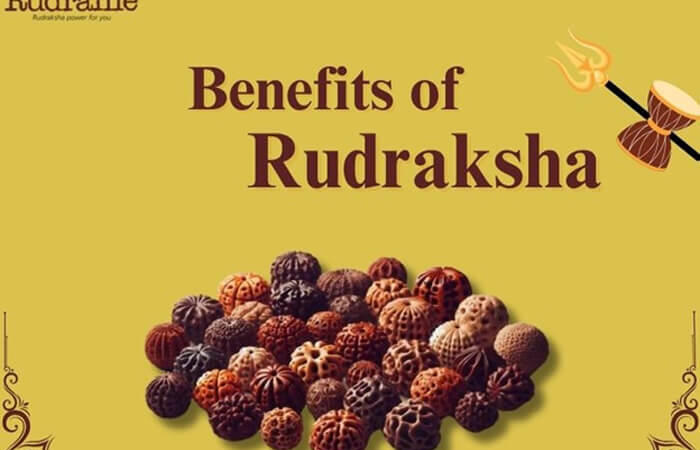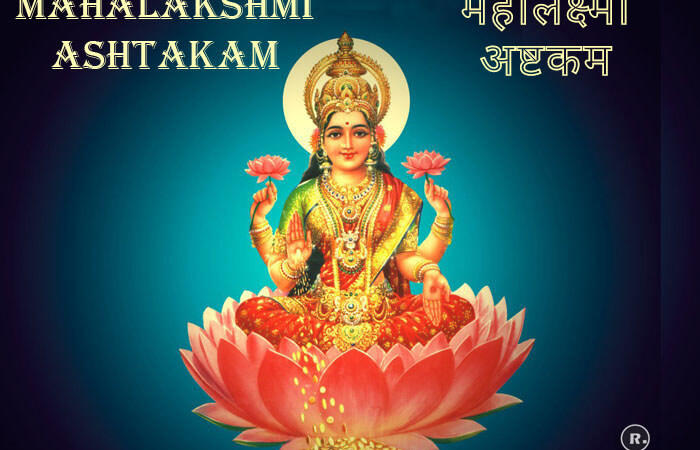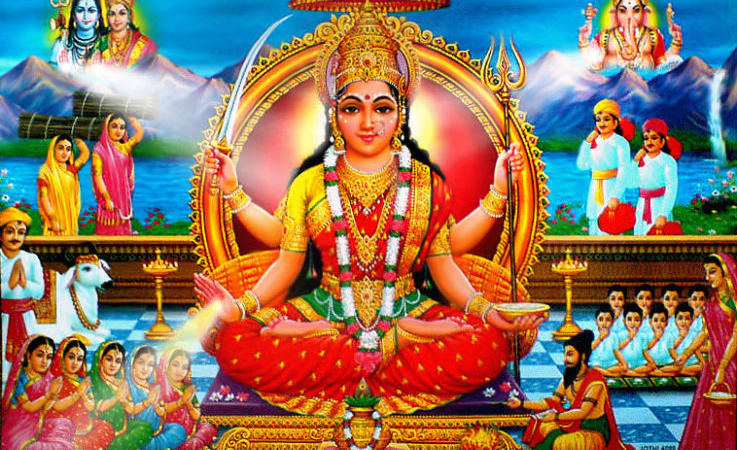Hindu Gods and their Vahanas (Vehicles)
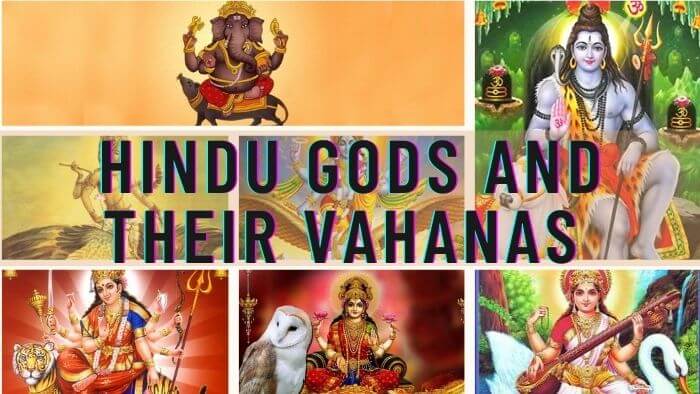
A Vahana (वाहन) is a vehicle or the carrier and in Hinduism, each God and Goddesses are represented with their Vahanas. Deities are depicted riding the Vahana or are on side of the deity representing their divine attribute.
In Sanskrit, Vah means to ride along with the land. and also represent the evil forces over which the deity dominates. An animal acting as Vahana owns some magical characteristics, in that every single example of its species, either living or carved in sculptural form, bears the implicit presence of the deity associated with it.
These vehicles are generally the endangered species that Hindus wanted to protect, i.e. Eagle, peacock, swan, tiger, owl, lion. Each of these animals stands for specific qualities that are in parallel with the image and functions of Hindu deities.
For instance Garuda the eagle is the Vahana of Vishnu since he is the protector and agility is an essential quality to have for him, Nandi is the Vahana of Lord Shiva the god of destruction, the Nandi represent strength, load-bearing capacity, and virility. Simha the lion is the Vahana of Goddess Durga as Durga is a female and fights fierce wars and the lion indicated courage and feistiness. Hansa is the Vahana of Goddess Saraswati who is the Goddess of knowledge and swan indicates beauty and purity, the qualities that need to be in knowledge.
God and Goddess with their Vahanas
Ganesh – Mushak (Mouse)

The chubby, gentle, wise, elephant-headed Ganesh, or Ganesha, is one of Hinduism’s most popular deities. He is the remover of obstacles, the deity whom worshippers first acknowledge when they visit a temple. He is usually shown in sculpture accompanied by or riding a rat. Since rats are seen as being capable of gnawing their way through most things, the rat symbolizes Ganesh’s ability to destroy every obstacle.
Shiva – Nandi (bull)
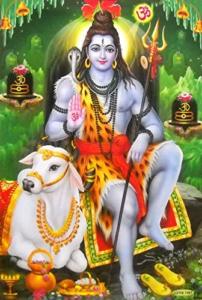
Shiva is one of the most complex gods of India, embodying seemingly contradictory qualities. He is the destroyer and the restorer, the great ascetic and the symbol of sensuality, the benevolent herdsman of souls, and the wrathful avenger. His guardian is Nandi (the white bull), whose statue can often be seen watching over the main shrine. The bull is said to embody sexual energy, fertility. Riding on its back, Shiva is in control of these impulses.
Vishnu – Garud (eagle)

Vishnu’s Vahana is the eagle King named Garuda. He is often shown as a winged human-shaped figure with a beaklike nose. Garuda carries Vishnu to Vaikuntha (heaven) where he lives.
Brahma – Seven Swans
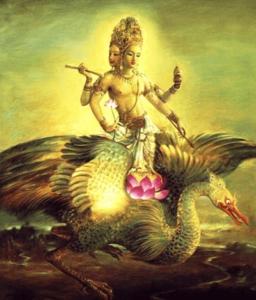
The god of creation is called Brahma. Brahma is often seen on temple walls or in-wall hangings in a Hindu household. Brahma is usually seen carrying the Vedas, a scepter, a string of prayer beads, a water pot a spoon used in making offerings in the fire sacrifice, or a bow. Brahma is usually portrayed with four heads and four arms. Brahma’s Vahana is a goose or a swan.
Durga – Lion
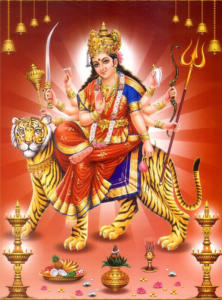
Durga is the most splendid manifestation of Devi. Virginal and sublime, contain within her the power of all the gods combined, she is the invincible power of Nature who triumphs over those who seek to subjugate her. Durga is one of the names of the goddess that is the wife of Shiva.
Durga has the role of a warrior goddess who destroys demons. She is usually depicted with ten arms that hold the weapons of the various gods. Durga Maa is depicted as riding on a lion or a tiger. Durga riding a tiger indicates that She possesses unlimited power and uses it to protect virtue and destroy evil. Her lion or tiger acts as her means of transportation and one of her many weapons.
Lakshmi – Owl
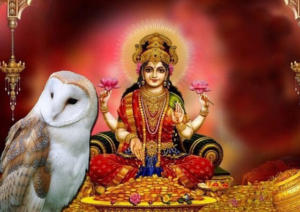
Lakshmi represents the beautiful and bountiful aspect of nature. As Bhoodevi, the earth-goddess, she nurtures life; as Shreedevi, the goddess of fortune, she bestows power, pleasure, and prosperity on those who deserve her grace. To realize her, one must respect the laws of life and appreciate the wonders of existence. Her Vehicle is the owl. In Bihar snd Jharkhand bats are believed to be a form of the Goddess Lakshmi.
Saraswati – Swan
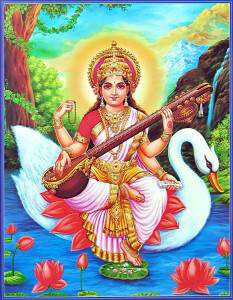
Saraswati, the goddess of art, music, and learning, usually holds a book and a stringed instrument called a veena. She is the river of consciousness that enlivens creation; she is the dawn-goddess whose rays dispel the darkness of ignorance. Without her, there is only chaos and confusion.
To realize her one must go beyond the pleasures of the senses and rejoice in the serenity of the spirit. Saraswati’s Vahana is a peacock or a swan. The peacock represents arrogance and pride over its beauty, and by having a peacock as her mount, the Goddess teaches Hindus not to be concerned with external appearance and to be wise regarding the eternal truth.
Parvati – lion
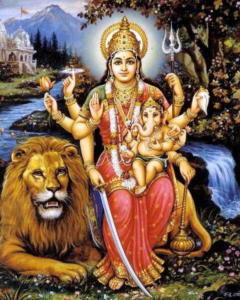
The goddess that is Shiva’s wife in her most gentle form is called Parvati. Parvati is depicted as a beautiful woman. Her Vahana is a lion.
Agni – ram
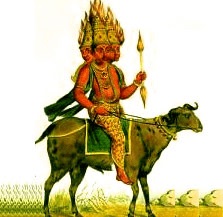
Agni is the Hindu god of fire and is present in every fire that is lit. The Rig Veda signified that Agni was one of the main gods. Agni’s Vahana is the ram. He is usually seen riding the ram or in a chariot pulled by many fiery horses.
Indra – Airawat (Elephant)
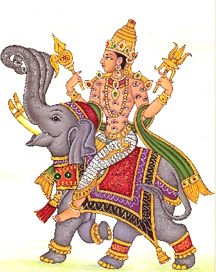
Indra is a Vedic storm god that carries thunderbolts as his weapons and is also a bringer of rains. Indra was an important god with the Aryan warriors. Indra’s Vahana is a great white elephant called Airavata. Airavata is often depicted with four tusks.
Hanuman – Hanuman does not have a Vahana.
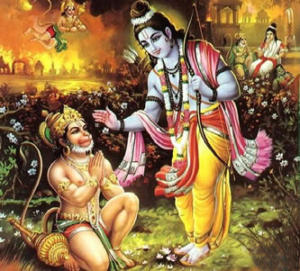
The monkey god Hanuman is one of the most widely worshipped gods in all of India. The reason for Hanuman’s popularity is because he helped command an army of monkeys that helped the god Ramama defeat the demon king Ravana. Hanuman’s popularity and stature and his devoted loyalty to Rama, monkeys are rarely harmed in India. Hanuman does not have a Vahana.
Surya – Horses
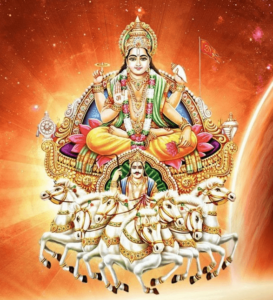
The sun god, Surya, mounts on a golden chariot, pulled by seven white horses. Seven is a sacred number in Hindu mythology. The seven horses are representative of the seven major sins and how the Sun God triumphs over them. They also symbolize the seven chakras (spiritual vortexes in the human body).
Kartikey – Peacock
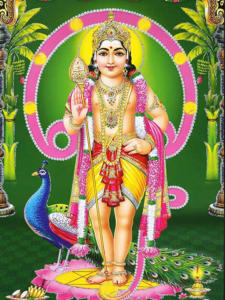
Lord Kartikey’s vehicle is called Paravani. A Peacock is elegant and discern Mayura {peacock}, represents splendor, purity, and majesty.
Kamdev – Parrot
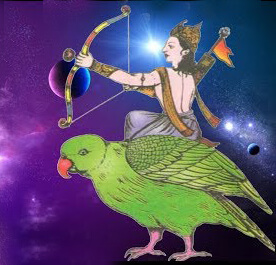
Kamdev, God of Love, is represented as a handsome young man with a parrot as his Vahana (vehicle), a sugarcane bow with bees forming the bowstring, and flower-tipped arrows. He lords over and is the personification of love, lust, and sensuality
Sheetala – Donkey
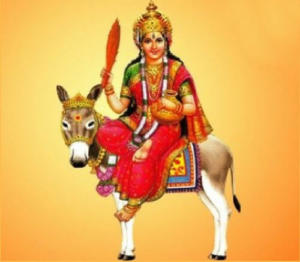
Goddess Sheetala Mata, the goddess of fever and smallpox, is also believed to ride on a donkey. Shitala Mata holds a broom in one hand and a Kalash (container with water) in her other hand on her mission of providing relief to the children.

